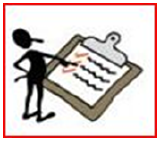9.1: PIE Paragraphs
- Page ID
- 235766
\( \newcommand{\vecs}[1]{\overset { \scriptstyle \rightharpoonup} {\mathbf{#1}} } \)
\( \newcommand{\vecd}[1]{\overset{-\!-\!\rightharpoonup}{\vphantom{a}\smash {#1}}} \)
\( \newcommand{\id}{\mathrm{id}}\) \( \newcommand{\Span}{\mathrm{span}}\)
( \newcommand{\kernel}{\mathrm{null}\,}\) \( \newcommand{\range}{\mathrm{range}\,}\)
\( \newcommand{\RealPart}{\mathrm{Re}}\) \( \newcommand{\ImaginaryPart}{\mathrm{Im}}\)
\( \newcommand{\Argument}{\mathrm{Arg}}\) \( \newcommand{\norm}[1]{\| #1 \|}\)
\( \newcommand{\inner}[2]{\langle #1, #2 \rangle}\)
\( \newcommand{\Span}{\mathrm{span}}\)
\( \newcommand{\id}{\mathrm{id}}\)
\( \newcommand{\Span}{\mathrm{span}}\)
\( \newcommand{\kernel}{\mathrm{null}\,}\)
\( \newcommand{\range}{\mathrm{range}\,}\)
\( \newcommand{\RealPart}{\mathrm{Re}}\)
\( \newcommand{\ImaginaryPart}{\mathrm{Im}}\)
\( \newcommand{\Argument}{\mathrm{Arg}}\)
\( \newcommand{\norm}[1]{\| #1 \|}\)
\( \newcommand{\inner}[2]{\langle #1, #2 \rangle}\)
\( \newcommand{\Span}{\mathrm{span}}\) \( \newcommand{\AA}{\unicode[.8,0]{x212B}}\)
\( \newcommand{\vectorA}[1]{\vec{#1}} % arrow\)
\( \newcommand{\vectorAt}[1]{\vec{\text{#1}}} % arrow\)
\( \newcommand{\vectorB}[1]{\overset { \scriptstyle \rightharpoonup} {\mathbf{#1}} } \)
\( \newcommand{\vectorC}[1]{\textbf{#1}} \)
\( \newcommand{\vectorD}[1]{\overrightarrow{#1}} \)
\( \newcommand{\vectorDt}[1]{\overrightarrow{\text{#1}}} \)
\( \newcommand{\vectE}[1]{\overset{-\!-\!\rightharpoonup}{\vphantom{a}\smash{\mathbf {#1}}}} \)
\( \newcommand{\vecs}[1]{\overset { \scriptstyle \rightharpoonup} {\mathbf{#1}} } \)
\( \newcommand{\vecd}[1]{\overset{-\!-\!\rightharpoonup}{\vphantom{a}\smash {#1}}} \)
\(\newcommand{\avec}{\mathbf a}\) \(\newcommand{\bvec}{\mathbf b}\) \(\newcommand{\cvec}{\mathbf c}\) \(\newcommand{\dvec}{\mathbf d}\) \(\newcommand{\dtil}{\widetilde{\mathbf d}}\) \(\newcommand{\evec}{\mathbf e}\) \(\newcommand{\fvec}{\mathbf f}\) \(\newcommand{\nvec}{\mathbf n}\) \(\newcommand{\pvec}{\mathbf p}\) \(\newcommand{\qvec}{\mathbf q}\) \(\newcommand{\svec}{\mathbf s}\) \(\newcommand{\tvec}{\mathbf t}\) \(\newcommand{\uvec}{\mathbf u}\) \(\newcommand{\vvec}{\mathbf v}\) \(\newcommand{\wvec}{\mathbf w}\) \(\newcommand{\xvec}{\mathbf x}\) \(\newcommand{\yvec}{\mathbf y}\) \(\newcommand{\zvec}{\mathbf z}\) \(\newcommand{\rvec}{\mathbf r}\) \(\newcommand{\mvec}{\mathbf m}\) \(\newcommand{\zerovec}{\mathbf 0}\) \(\newcommand{\onevec}{\mathbf 1}\) \(\newcommand{\real}{\mathbb R}\) \(\newcommand{\twovec}[2]{\left[\begin{array}{r}#1 \\ #2 \end{array}\right]}\) \(\newcommand{\ctwovec}[2]{\left[\begin{array}{c}#1 \\ #2 \end{array}\right]}\) \(\newcommand{\threevec}[3]{\left[\begin{array}{r}#1 \\ #2 \\ #3 \end{array}\right]}\) \(\newcommand{\cthreevec}[3]{\left[\begin{array}{c}#1 \\ #2 \\ #3 \end{array}\right]}\) \(\newcommand{\fourvec}[4]{\left[\begin{array}{r}#1 \\ #2 \\ #3 \\ #4 \end{array}\right]}\) \(\newcommand{\cfourvec}[4]{\left[\begin{array}{c}#1 \\ #2 \\ #3 \\ #4 \end{array}\right]}\) \(\newcommand{\fivevec}[5]{\left[\begin{array}{r}#1 \\ #2 \\ #3 \\ #4 \\ #5 \\ \end{array}\right]}\) \(\newcommand{\cfivevec}[5]{\left[\begin{array}{c}#1 \\ #2 \\ #3 \\ #4 \\ #5 \\ \end{array}\right]}\) \(\newcommand{\mattwo}[4]{\left[\begin{array}{rr}#1 \amp #2 \\ #3 \amp #4 \\ \end{array}\right]}\) \(\newcommand{\laspan}[1]{\text{Span}\{#1\}}\) \(\newcommand{\bcal}{\cal B}\) \(\newcommand{\ccal}{\cal C}\) \(\newcommand{\scal}{\cal S}\) \(\newcommand{\wcal}{\cal W}\) \(\newcommand{\ecal}{\cal E}\) \(\newcommand{\coords}[2]{\left\{#1\right\}_{#2}}\) \(\newcommand{\gray}[1]{\color{gray}{#1}}\) \(\newcommand{\lgray}[1]{\color{lightgray}{#1}}\) \(\newcommand{\rank}{\operatorname{rank}}\) \(\newcommand{\row}{\text{Row}}\) \(\newcommand{\col}{\text{Col}}\) \(\renewcommand{\row}{\text{Row}}\) \(\newcommand{\nul}{\text{Nul}}\) \(\newcommand{\var}{\text{Var}}\) \(\newcommand{\corr}{\text{corr}}\) \(\newcommand{\len}[1]{\left|#1\right|}\) \(\newcommand{\bbar}{\overline{\bvec}}\) \(\newcommand{\bhat}{\widehat{\bvec}}\) \(\newcommand{\bperp}{\bvec^\perp}\) \(\newcommand{\xhat}{\widehat{\xvec}}\) \(\newcommand{\vhat}{\widehat{\vvec}}\) \(\newcommand{\uhat}{\widehat{\uvec}}\) \(\newcommand{\what}{\widehat{\wvec}}\) \(\newcommand{\Sighat}{\widehat{\Sigma}}\) \(\newcommand{\lt}{<}\) \(\newcommand{\gt}{>}\) \(\newcommand{\amp}{&}\) \(\definecolor{fillinmathshade}{gray}{0.9}\)WHAT ARE PARAGRAPHS?
Paragraphs group related sentences around one main point, so the paragraphs can work together to prove the larger argument (the thesis) in an essay. Paragraphs provide visual breaks between ideas and signal a progression of ideas in the essay.
WHAT KINDS OF PARAGRAPHS ARE THERE?
In an essay, you’ll have the following types of paragraphs:
- Introductions capture your reader’s interest, establish a context for your topic, and smoothly lead your reader into your topic and thesis. You can read more about them in Chapter 8: Introductions.
- Body paragraphs develop each of the main points and sub-points needed for your thesis to be credible. Body paragraphs contain topic sentences, evidence and analysis. You will read more about them in this chapter.
- Conclusions help you bring together the points you’ve made in an essay, they delve into the larger significance or impact of your argument, and they should leave your reader convinced of that central argument. You can read more about them in Chapter 8: Conclusions.
PARAGRAPHS DO NOT:
- Consist of only quotes
- Consist of only facts
- Consist of only summary
- Contain a series of sentences not related to one another or to the thesis.
WHY USE PARAGRAPHS?
- RELEVANCY: Paragraphs help your reader to follow the logic of the essay and clearly see how each of your body paragraphs is related to your thesis.
- FOCUS: Paragraphs help your reader easily identify the one main idea in each paragraph and how each of the sentences within that paragraph contributes to this main idea.
- ORGANIZATION: Along with transitions and topic sentences, paragraph breaks help your reader understand you are moving on to a new point or aspect of your essay.
- DEVELOPMENT: Paragraphs require critical thinking to prove the main point of the essay by making connections with textual evidence, outside evidence, and your own analysis.
- VOICE: Paragraphs are a place where you get to say what you think and prove why you’re right.
HOW CAN I WRITE A PARAGRAPH?
One way to ensure that each of your body paragraphs is clearly focused, convincingly developed, and connects back to thesis is to use
The PIE strategy:
| P = Point | I = Information | E = Explanation |
|---|---|---|
| The “P” part of your paragraph is your topic sentence: a clear statement of the main claim you are making in the paragraph. | The “I” fills out the body of your paragraph with concrete evidence that supports the main claim. | The “E” is the writer’s explanation of the significance of the provided information, especially as it relates to the thesis. |
| Another way to look at it: | ||
|
Tell me what your main point is.
|
Show me, with evidence and examples, how or why your point is true.
|
“So what?”
|
|
Prove the claim in your topic sentence with evidence that can come in different forms:
|
|
See the PIE paragraph structure in the first body paragraph from an essay on Malcolm X’s “Learning to Read”:
The diligence and persistent effort Malcolm X showed in learning to read has become disappointingly rare.
Malcolm X in his autobiography tells us that when he went to prison, he could hardly read or write. He decided the way to improve would be to copy the entire dictionary word for word by hand. He said to copy just the first page alone took an entire day. The next day he reviewed all the words he did not remember, so he slowly built his vocabulary, and at the same time he started educating himself about the larger world as he describes the dictionary as a “miniature encyclopedia” (2). Malcolm X carried on until he copied the entire dictionary cover to cover. However, the time he dedicated to his writing was not confined to this amazing achievement alone: “Between what I wrote in my tablet, and writing letters, during the rest of my time in prison I would guess I wrote a million words” (2). The dedication to his own education and how he strengthened his own intelligence and abilities through sheer force of will is impressive but unfortunately is the exception rather than the norm. In Generation Me, the author Jean Twenge addresses the present generation of people who have been taught to put themselves first and expect instant results without working hard to achieve them. Twenge states: “They are less likely to work hard today to get a reward tomorrow—an especially important skill these days, when many good jobs require graduate degrees” (157).
If people are less willing today to work hard, then we are going to have increasingly uneducated, lazy people who spend more time complaining than achieving. With a lack of education, we won’t be strong critical thinkers so will be easily taken in by people who want to exploit us for profit like advertisers and corporate America. Instead of defining who we are, people who want to sell us things will continue to shape our wants, desires and perceptions of ourselves.
Of course, PIE paragraphs don’t always need to look exactly like this; while you want to start a paragraph with your main Point, you might alternate between Information and Explanation, so that your paragraph could look like this:
P => I => E => I => E
Let’s practice creating paragraphs using the PIE paragraph approach.
First, select a topic:
|
immigration rap music legalizing all drugs |
the president the health care system the minimum wage |
reality shows police profiling a topic raised in your current class reading |
|---|
oint } Second, using the topic you selected, write a topic sentence that states the main claim (your specific opinion) that you want to argue that fits the size of the paragraph:
_____________________________________________________________________________________________________________
_____________________________________________________________________________________________________________
_____________________________________________________________________________________________________________
Third, brainstorm concrete evidence/information you can use to prove your main claim:
Fourth, analyze and explain the significance, importance or impact of your evidence and claims:
Finally, using all the advice in this chapter, put it all together into a complete paragraph
Use the following questions to provide constructive feedback on paragraphs:
oint } Underline the writer’s topic sentence. Based on this sentence alone, what do you predict this paragraph will have to say about the topic? What is the writer’s point? Is it arguable? Is the main point narrow enough to be proven in one paragraph?
________________________________________________________________________________________
________________________________________________________________________________________
________________________________________________________________________________________
________________________________________________________________________________________
nformation } Now, read through the entire paragraph once and jot down what you think the main point of the paragraph seems to be. Does it match with what you thought the main point would be based solely on the topic sentence? Is the evidence clear and convincing? Are there any details that seem irrelevant or not directly connected? Is any needed explanation missing?
________________________________________________________________________________________
________________________________________________________________________________________
________________________________________________________________________________________
________________________________________________________________________________________
xplanation } Has the writer included his/her own analysis of the larger significance for the main claim in the paragraph? Did he/she explain WHY the reader should care about this topic? Has he/she looked at the larger outcome or importance of the claim? Do you feel convinced by the writer’s reasoning?
________________________________________________________________________________________
________________________________________________________________________________________
________________________________________________________________________________________
________________________________________________________________________________________





